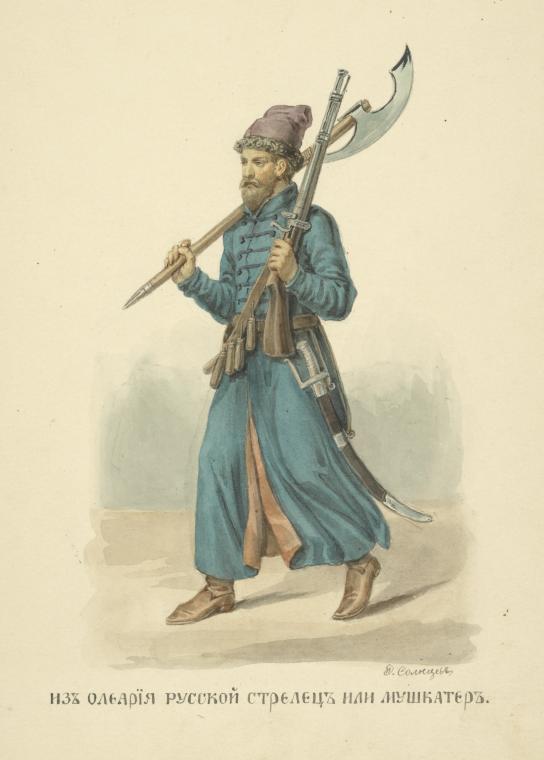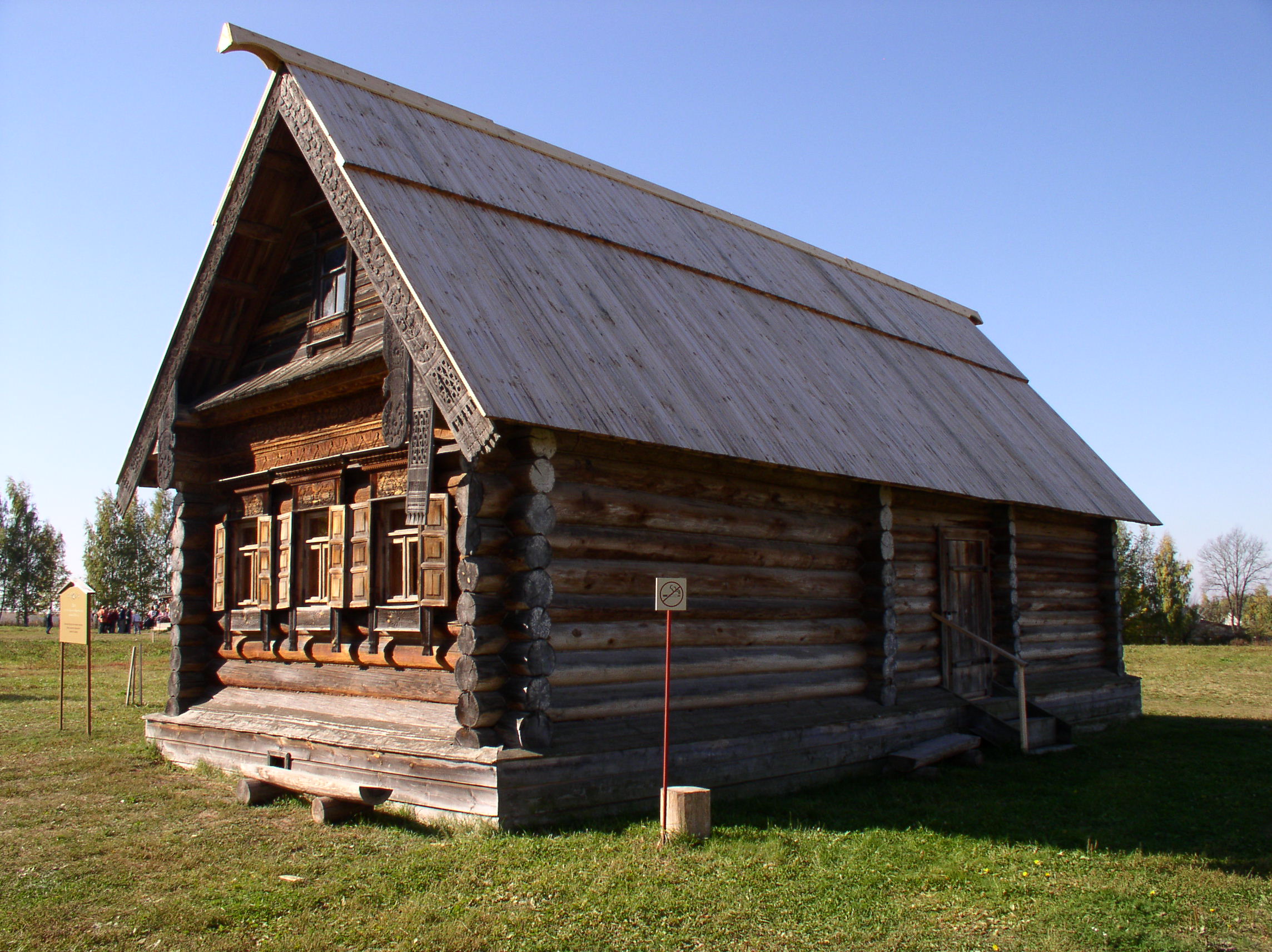|
Streltsy Department
The ''Streletsky prikaz'' (), sometimes translated as the Streltsy Department, was one of the main governmental bodies (a ''prikaz'') in Russia during the 16th and 17th centuries which administered the streltsy. History The first reference to the ''Streletsky prikaz'' appears in 1571, but in the mid-1550s, it already existed under the name of ''Streletskaya izba'' (). The ''Streletsky prikaz'' was in charge of the Moscow and municipal streltsy, their lands and other properties, disbursement of their salary and bread allowances, and their cases in court. In 1672–1683, it also collected the taxes of the streltsy. After the streltsy uprising in 1698, the ''Streletsky prikaz'' was engaged in regular administrative and managerial matters. In 1701, it was transformed into the ''Prikaz zemskikh del'' (), inheriting the functions of the ''zemstvo A zemstvo (, , , ''zemstva'') was an institution of local government set up in consequence of the emancipation reform of 1861 of Imperi ... [...More Info...] [...Related Items...] OR: [Wikipedia] [Google] [Baidu] |
Prikaz
A prikaz (; , plural: ) was an administrative, judicial, territorial, or executive bureaucracy , office functioning on behalf of palace, civil, military, or church authorities in the Grand Duchy of Moscow and the Tsardom of Russia from the 15th to the 18th centuries. The term usually suggests the functionality of a modern "ministry (government department), ministry", "office", "department", or "bureau"; however, in practice ''prikaz'' was historically applied to most governmental organizations regardless of their function or authority. In modern Russian, wikt:приказ, ''prikaz'' literally means an 'order' in the meaning of 'directive' or 'command'. Most of the ''prikazy'' were subordinated to the boyar duma. Some of them, palace ''prikazy'' (), were subordinated to the or , which answered directly to the tsar of Russia. The patriarch of Moscow and all Rus' had his own ''prikazy''. History Originally, ''prikazy'' were created by private orders given by the tsar to a certain ... [...More Info...] [...Related Items...] OR: [Wikipedia] [Google] [Baidu] |
Russia
Russia, or the Russian Federation, is a country spanning Eastern Europe and North Asia. It is the list of countries and dependencies by area, largest country in the world, and extends across Time in Russia, eleven time zones, sharing Borders of Russia, land borders with fourteen countries. Russia is the List of European countries by population, most populous country in Europe and the List of countries and dependencies by population, ninth-most populous country in the world. It is a Urbanization by sovereign state, highly urbanised country, with sixteen of its urban areas having more than 1 million inhabitants. Moscow, the List of metropolitan areas in Europe, most populous metropolitan area in Europe, is the capital and List of cities and towns in Russia by population, largest city of Russia, while Saint Petersburg is its second-largest city and Society and culture in Saint Petersburg, cultural centre. Human settlement on the territory of modern Russia dates back to the ... [...More Info...] [...Related Items...] OR: [Wikipedia] [Google] [Baidu] |
Streltsy
The streltsy (, ; , ) were the units of Russian firearm infantry from the 16th century to the early 18th century and also a social stratum, from which personnel for streltsy troops were traditionally recruited. They are also collectively known as ''streletskoye voysko'' (). These infantry troops reinforced feudal levy horsemen or ''Landed Army, pomestnoye voysko'' (). The first units were established by Ivan the Terrible as part of the first Russian standing army. The streltsy were under the administration of the ''Streletsky prikaz'' from 1571. Peter the Great curtailed the influence of the streltsy, and following the streltsy uprising of 1698, streltsy units began to be disbanded. However, it was not until the 1720s that this process was completed. Origins and organization The first streltsy units were created by Ivan the Terrible sometime between 1545 and 1550 and armed with Arquebus, arquebuses. During his reign, Russia was fighting wars almost continuously, including ... [...More Info...] [...Related Items...] OR: [Wikipedia] [Google] [Baidu] |
Izba
An izba ( rus, изба́, p=ɪzˈba, a=Ru-изба.ogg) is a traditional Russian countryside dwelling. Often a log house, it forms the living quarters of a conventional Russian farmstead. It is generally built close to the road and inside a Yard (land), yard, which also encloses a kitchen garden, hay shed, and barn within a simple woven stick Agricultural fencing, fence. Traditional, old-style izba construction involved the use of simple tools, such as ropes, axes, knives, and spades. Nails were not generally used, as metal was relatively expensive, and neither were saws a common construction tool. Both interior and exterior are of split pine tree trunks, the gap between is traditionally filled with river clay, not unlike the North American log cabin. The dominant building material of Russian vernacular architecture, and material culture generally, for centuries was wood. Specifically houses were made from locally-cut rough-hewn logs, with little or no stone, metal, or glass. ... [...More Info...] [...Related Items...] OR: [Wikipedia] [Google] [Baidu] |
Moscow
Moscow is the Capital city, capital and List of cities and towns in Russia by population, largest city of Russia, standing on the Moskva (river), Moskva River in Central Russia. It has a population estimated at over 13 million residents within the city limits, over 19.1 million residents in the urban area, and over 21.5 million residents in Moscow metropolitan area, its metropolitan area. The city covers an area of , while the urban area covers , and the metropolitan area covers over . Moscow is among the world's List of largest cities, largest cities, being the List of European cities by population within city limits, most populous city entirely in Europe, the largest List of urban areas in Europe, urban and List of metropolitan areas in Europe, metropolitan area in Europe, and the largest city by land area on the European continent. First documented in 1147, Moscow became the capital of the Grand Principality of Moscow, which led the unification of the Russian lan ... [...More Info...] [...Related Items...] OR: [Wikipedia] [Google] [Baidu] |
Salary
A salary is a form of periodic payment from an employer to an employee, which may be specified in an employment contract. It is contrasted with piece wages, where each job, hour or other unit is paid separately, rather than on a periodic basis. Salary can also be considered as the cost of hiring and keeping human resources for corporate operations, and is hence referred to as personnel expense or salary expense. In accounting, salaries are recorded in payroll accounts. A salary is a fixed amount of money or compensation paid to an employee by an employer in return for work performed. Salary is commonly paid in fixed intervals, for example, monthly payments of one-twelfth of the annual salary. Salaries are typically determined by comparing market pay-rates for people performing similar work in similar industries in the same region. Salary is also determined by leveling the pay rates and salary ranges established by an individual employer. Salary is also affected by the number of ... [...More Info...] [...Related Items...] OR: [Wikipedia] [Google] [Baidu] |
Zemstvo
A zemstvo (, , , ''zemstva'') was an institution of local government set up in consequence of the emancipation reform of 1861 of Imperial Russia by Emperor Alexander II of Russia. Nikolay Milyutin elaborated the idea of the zemstvo, and the first zemstvo laws went into effect in 1864. After the October Revolution of 1917 the zemstvo system was shut down by the Bolsheviks and replaced with a multilevel system of workers' and peasants' councils ("soviets"). History Zemstvos were created as part of the larger Great Reforms with the specific goal of creating organs of elected, local self-government. The existing system of local self-government in the Russian Empire was represented at the lowest level by the mir and at the regional level by the volost. These institutions continued during the zemstvo period; however, they were seen as insufficient, due to their lack of independent authority. In 1864, the first law on zemstvos was enacted by the Emperor, a law that outlined the p ... [...More Info...] [...Related Items...] OR: [Wikipedia] [Google] [Baidu] |



